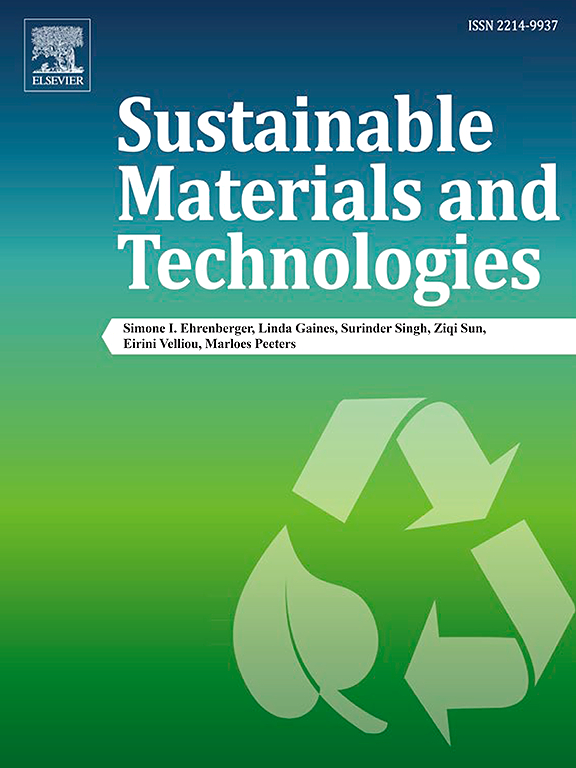A natural glue paste aminated graphene oxide onto ammonium polyphosphate towards “multiphase integrated” polymer composites: synthesis and application
IF 8.6
2区 工程技术
Q1 ENERGY & FUELS
引用次数: 0
Abstract
Ammonium polyphosphate (APP) is an efficient halogen-free flame retardant that has been widely applied in various polymer systems. However, its practical application is often limited by poor dispersion and insufficient interfacial compatibility. This study is inspired by the natural mechanism of mollusks secreting adhesive proteins to achieve strong adhesion to wet rock surfaces. A sustainable flame retarding-reinforcing compound was synthesized through molecular design by grafting aminated graphene oxide (NGO) onto chitosan (CS)-coated APP (APP@CS-NGO), which exhibited excellent dispersion ability, and its chemical bonding with epoxidized natural rubber (ENR) to form a “Multiphase Integrated” material (MI). The effects of interphase compatibility and dispersion of fillers on flame retardancy and mechanical properties of the materials were investigated. The results showed that the APP@CS-NGO has been successfully prepared through the NGO and APP under the effect of CS bridging. The compatibility and flame retardancy of “Multiphase Integrated” materials were further investigated. The results showed that the tensile properties of the MI 5 improved by 74.6 % compared to pure APP composites (MI 2), with a loss factor reduced to 0.83, indicating superior compatibility and dispersion in ENR. Meanwhile, the intrinsic mechanism of compatibility enhancement is explored in depth through simulation. The LOI of MI 5 increased from 19.5 % to 29.1 %, with UL-94 reaching V-0. At 800 °C, the residual carbon content rose from 26.2 % to 39.5 %, and the peak heat release rate (pHRR) was 67.8 % lower than MI 1. These results confirm that enhanced compatibility improves flame retardancy. Furthermore, this provides new ways to achieve fire-safe and sustainable polymers.

一种天然胶水将氧化石墨烯胺化到聚磷酸铵上,用于“多相集成”聚合物复合材料的合成与应用
聚磷酸铵(APP)是一种高效的无卤阻燃剂,广泛应用于各种聚合物体系。然而,其实际应用往往受到分散性差和界面相容性不足的限制。这项研究的灵感来自于软体动物分泌粘附蛋白以实现对潮湿岩石表面的强粘附的自然机制。通过分子设计,将胺化氧化石墨烯(NGO)接枝到壳聚糖(CS)包覆的APP (APP@CS-NGO)上,合成了一种具有优异分散能力的可持续阻燃增强材料,并与环氧化天然橡胶(ENR)形成了“多相集成”材料(MI)。研究了填料的相相容性和分散性对材料的阻燃性和力学性能的影响。结果表明,在CS桥接作用下,通过NGO和APP成功制备了APP@CS-NGO。进一步研究了“多相集成”材料的相容性和阻燃性。结果表明,与纯APP复合材料(MI 2)相比,MI 5的拉伸性能提高了74.6%,损耗因子降至0.83,在ENR中具有良好的相容性和分散性。同时,通过仿真深入探讨了相容性增强的内在机制。MI - 5的LOI由19.5%提高到29.1%,UL-94达到V-0。在800℃时,残余碳含量从26.2%上升到39.5%,峰值放热率(pHRR)比MI 1降低了67.8%。这些结果证实了相容性的增强提高了阻燃性。此外,这为实现防火安全和可持续聚合物提供了新的途径。
本文章由计算机程序翻译,如有差异,请以英文原文为准。
求助全文
约1分钟内获得全文
求助全文
来源期刊

Sustainable Materials and Technologies
Energy-Renewable Energy, Sustainability and the Environment
CiteScore
13.40
自引率
4.20%
发文量
158
审稿时长
45 days
期刊介绍:
Sustainable Materials and Technologies (SM&T), an international, cross-disciplinary, fully open access journal published by Elsevier, focuses on original full-length research articles and reviews. It covers applied or fundamental science of nano-, micro-, meso-, and macro-scale aspects of materials and technologies for sustainable development. SM&T gives special attention to contributions that bridge the knowledge gap between materials and system designs.
 求助内容:
求助内容: 应助结果提醒方式:
应助结果提醒方式:


